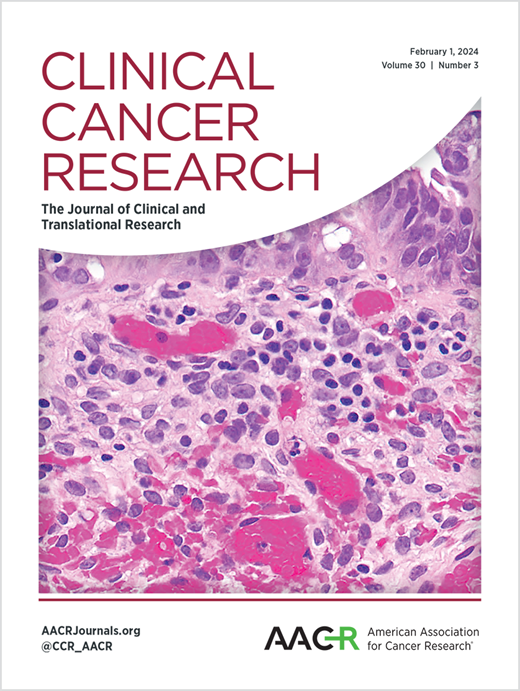Targeting Acetyl-CoA Carboxylase Suppresses De Novo Lipogenesis and Tumor Cell Growth in Multiple Myeloma
IF 10
1区 医学
Q1 ONCOLOGY
引用次数: 0
Abstract
Purpose: In multiple myeloma (MM), tumor cells reprogram metabolic pathways to sustain growth and monoclonal immunoglobulin production. This study examines acetyl-CoA carboxylase 1 (ACC1), the enzyme driving the rate-limiting step in de novo lipogenesis (DNL), in MM metabolic reprogramming, particularly in c-MYC (MYC)-driven subtypes. Experimental design: ACC1 expression was evaluated across MM genetic subgroups, focusing on MYC translocations. Functional studies using ACC1 inhibitors and genetic knockdown assessed MM cell growth, lipid synthesis, and metabolic homeostasis in vitro and in vivo. The role of MYC overexpression in ACC1 sensitivity was examined, with palmitate rescue experiments. Lipidomic analysis and assessments of ER stress, protein translation, and oxidative damage elucidated underlying mechanisms. Results: ACC1 was overexpressed in MYC-translocated MM. Its inhibition or knockdown reduced MM cell growth in vitro and in vivo, particularly in MYC-overexpressing cells. ACC1 knockdown suppressed de novo lipid synthesis, partially rescued by palmitate. Lipidomic disruptions increased cholesterol ester desaturation and altered phospholipid ratios, inducing ER stress, impaired translation, protein carbonylation, oxidative damage, and apoptosis. Conclusions: ACC1 is a metabolic vulnerability in MYC-driven MM. Inhibiting ACC1 disrupts lipid homeostasis, induces ER stress, and causes oxidative damage, impairing cell survival. Targeting lipid synthesis pathways, especially in MYC-dependent subtypes, offers a promising therapeutic strategy for MM.求助全文
约1分钟内获得全文
求助全文
来源期刊

Clinical Cancer Research
医学-肿瘤学
CiteScore
20.10
自引率
1.70%
发文量
1207
审稿时长
2.1 months
期刊介绍:
Clinical Cancer Research is a journal focusing on groundbreaking research in cancer, specifically in the areas where the laboratory and the clinic intersect. Our primary interest lies in clinical trials that investigate novel treatments, accompanied by research on pharmacology, molecular alterations, and biomarkers that can predict response or resistance to these treatments. Furthermore, we prioritize laboratory and animal studies that explore new drugs and targeted agents with the potential to advance to clinical trials. We also encourage research on targetable mechanisms of cancer development, progression, and metastasis.
 求助内容:
求助内容: 应助结果提醒方式:
应助结果提醒方式:


